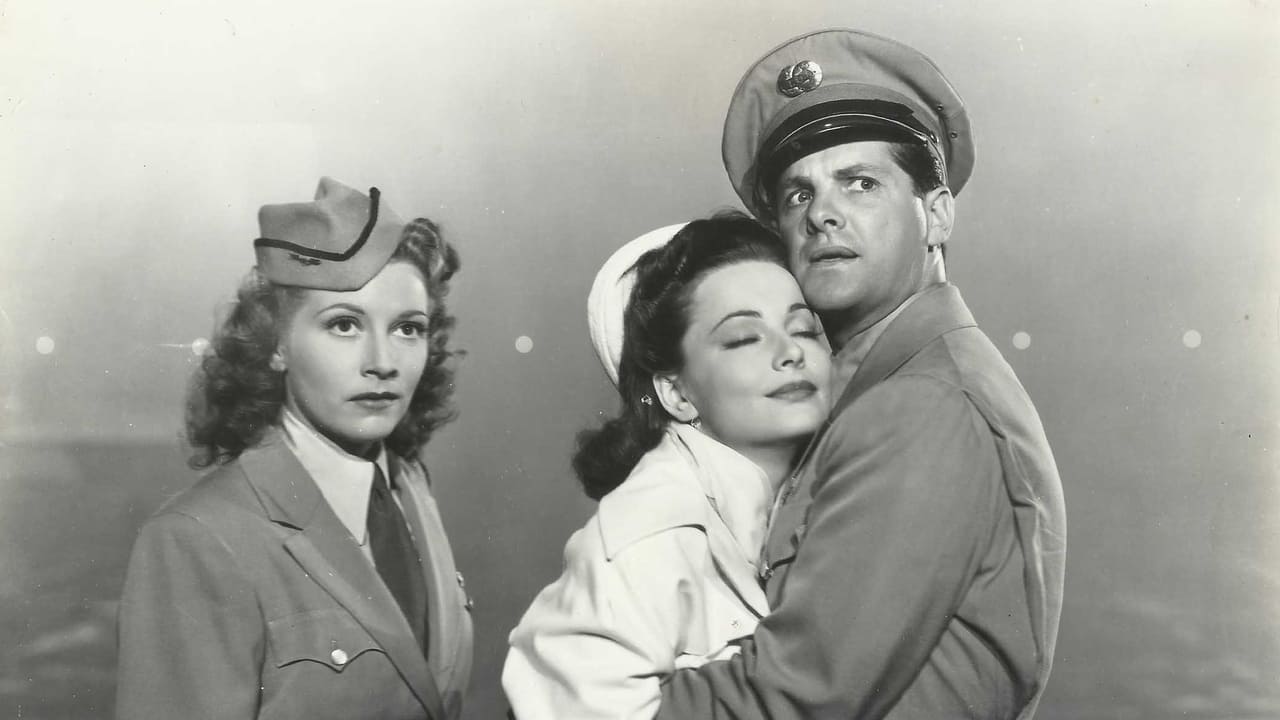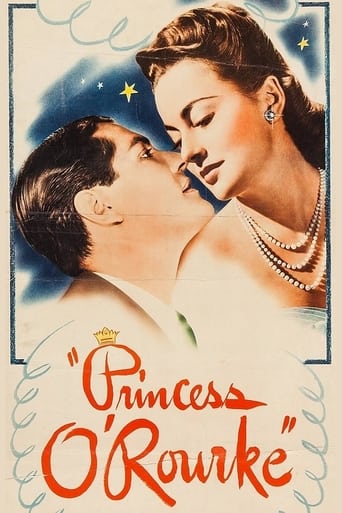



Excellent, a Must See
A movie that not only functions as a solid scarefest but a razor-sharp satire.
View MoreIf you're interested in the topic at hand, you should just watch it and judge yourself because the reviews have gone very biased by people that didn't even watch it and just hate (or love) the creator. I liked it, it was well written, narrated, and directed and it was about a topic that interests me.
View MoreIt's simply great fun, a winsome film and an occasionally over-the-top luxury fantasy that never flags.
View MoreWriter Norman Krasna had received three Academy Award nominations for his original stories or screenplays (most recently for The Devil and Miss Jones (1941)) by the time he tried his hand at directing his first film, this one. Since he only directed two more films in his career, once in 1950 and again in 1956, one might assume that he preferred writing.For this romantic comedy, Krasna finally earned his only Oscar (on his last nomination) for an Original Screenplay. His creative story about an incognito princess out of her native country who meets and falls in love with a commoner predates by 10 years the better known classic Roman Holiday (1953) (its three different writers would share Oscar nominations and Academy Awards for their similar story and screenplay).Olivia de Havilland plays Princess Maria, who lives with her Uncle Holman (Charles Coburn) in exile, because of World War II, in New York City. Count Peter (Curt Bois) wants to marry her, but she doesn't love him even though Holman expresses concern about their country's succession (e.g. she needs a male offspring, an heir). However, he's also concerned about his niece's well being, so he sends her to San Francisco under an assumed name, Mary Williams, to improve her state of mind and/or broaden her horizons. Because of bad weather and too many sleeping pills to combat her fear of flying, she ends up back in New York in the apartment of the plane's pilot, Eddie O'Rourke (Robert Cummings). It's not what you think, she was passed out and he was chivalrous not lecherous. He assumes she's a war refugee and she doesn't enlighten him. Instead, they begin dating during which she meets his married friends, Jean & Dave Campbell (Jane Wyman & Jack Carson), who naturally quarrel a bit (providing additional comic relief).When Holman finds out about Maria's beau, he has an agent investigate the pilot and is delighted to learn that Eddie is from a large family of boys (as was Eddie's father). Things get rather complicated, diplomatically, at this point. The princess is willing and able to marry a commoner, provided that he'll renounce his U.S. citizenship, which is of course a showstopper for him. It's all resolved in a rather cute (if incredible) way, with Harry Davenport as the Supreme Court judge who performs the ceremony at the White House, the President (FDR) and his dog.
View MoreI thought it was really funny at the beginning when the princess had a couple of sleeping pills, and then, being dragged by the pilots who found her not waking up. Seriously, Olivia de Havilland done that scene so well that I cant believe shes still alive today and is 100 years old! She really reminds me of Audrey Hepburn and her love interest on this, Robert Cummings reminds me of Frank Sinatra. They both really are a good match like it was a good idea to have them on together in this!Im glad it even won an Oscar, although I wouldn't expect it to get that far but De Havilland I think really made this film shine! Its very good, please watch this if you like royal romance films!
View MoreThere is something pathetic about how World War II hurt the institution of monarchy throughout Europe (and nearly Japan as well). In Western Europe most of the monarchs fled the onslaught of the Nazi Blitzkrieg, the most notable exceptions being the rulers of Denmark and Belgium. But it is instructive to remember what happened to them. The King of Denmarck remained defiant of the Nazis (if basically powerless) and even (to his immortal glory) purposely wore a Jewish star on his royal tunic when the Nazis began imposing their anti-Semitic policies on the Danish Jewish population. On the other hand, King Leopold III of Belgium did not show a finer spirit (though he always insisted he did the right thing). Leopold willingly surrendered to the Germans and cooperated with them. His reason for this was to protect his people. This (of course) did not include the Jewish population in Belgium. After the war the Allies were not very happy with Leopold (as they were with the Danish King). Neither were the Belgians, most of whom compared Leopold's cowardice (their view) with his father Albert's heroic defense of Belgium in World War I, that made King Albert one of the great heroes of his time. In 1951, Leopold had to abdicate in favor of his son Bauduin I. Leopold died in 1973, never recovering any popularity with his people.Eastern Europe was similar, some monarchs proving heroic even to the point of death. King Boris of Bulgaria had to make a devil's pact with the Nazis in the face of Soviet aggression. But he refused to agree with the transportation of Jews (Bulgaria's population agreed with Boris - 90 percent of the Jewish population of Bulgaria survived World War II, the highest in all Europe among occupied countries). In 1943 he again refused, and died in some sudden, unexpected way while flying home from a meeting with Hitler. To this day poison or some other odd murder devise (depressurizing the cabin of Boris's plane has been suggested) may have killed him. The nation threw out the Coburg family as royal family when the Russians set up their puppet Communist regime. But when the Communists were finally overturned, the Coburgs were welcomed back. The monarchy wasn't restored, but the current head of the house was elected Prime Minister for awhile.Most of those monarchs who fled settled in England or the U.S. or Canada for the duration. The only one who was able to return to his throne during the war was Haile Selassie of Ethiopia, as the British kicked the Italians out of that country. After the war the luckiest of the monarchs was Hirohito of Japan. Although there is still controversy about how deeply involved in the aggressions of the 1930s and 1940s he was (the title of one study, THE IMPERIAL CONSPIRACY, tells that suspicion), he was smart enough to know when to throw in the towel in the face of Hiroshima and Nagasaki. He was able to show to General Douglas MacArthur that he could be a damned good constitutional monarch. That's why Japan still has a royal family.Only a handful of movies deal with the flight of the royals to Allied (but non-Communist) lands. The most notable ones are WHERE'S THERE HOPE, wherein Bob Hope is an unknown heir to a Balkan throne who has to be protected by Signe Hasso, and this film, PRINCESS O'ROURKE. Written by Norman Krasna (the screenplay won him an Oscar), it tells of how one of the heirs to the throne of an invaded kingdom (Olivia De Haviland) is mistaken for a maid by an American Air Force pilot (Bob Cummings), and how he and she slowly fall in love. The comedy works here as the story is built to show the so-called superiority of the equality of Americans (at least Caucasian, Christian Americans) over old world aristocrats and out-of-date monarchies. There are some lovely bits in it. Charles Coburn plays De Haviland's uncle, a crusty old snob. But while initially opposed to the union, he begins changing his mind when he realizes that Cummings comes from a family of breeders (he has five brothers, and his father had seven, or some such set of numbers). Smiling and acting like he is considering purchasing a brood mare for breeding purposes, he keeps repeating those figures like they are a mantra. It is only when Cummings refuses the idea of his kids losing their American character and citizenship that Coburn's harsher snobbery returns.The film is famous also for the appearance (in his only movie role) of F.D.R.'s "little dog Fala" as himself. The final sequences in the film were filmed at the White House (actually quite an achievement for any studio in wartime). The best moment is at the end, when Cummings upon leaving with his bride after a secret White House marriage tips an "aide" watching at the door. We never see the face of the aide in question, but I imagine afterward he roared with laughter while having a cigarette and possibly one of his own martinis.
View MorePrincess O'Rourke, the story of a temporarily exiled princess living in New York is pretty indicative of the romantic comedy genre of the time: Boy meets girl under zany circumstances (in this case, Olivia de Havilland is a frightened airline passenger and Robert Cummings is her pilot), they very quickly fall in love and she withholds the fact that she is royalty until the end when mayhem ensues. Formulaic? Definitely. But de Havilland is so engaging that you refrain from rolling your eyes more than if it were many other actresses and Robert Cummings is a charming leading man.The supporting characters of note include Charles Coburn (who seems to play the `curmudgeonly uncle' more often than not this is the second time I've seen him play uncle to de Havilland), Jack Carson (of Mildred Pierce fame) as Cummings' best friend and a really sour-faced Jane Wyman as Carson's wife. Princess O'Rourke isn't a well-known film or even a great film, but it certainly has its charm. My recommendation is to watch this film if it comes around on cable but it is average enough to not make it worthwhile to actively seek out.--Shelly
View More